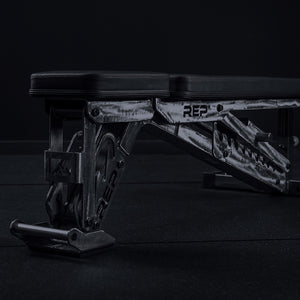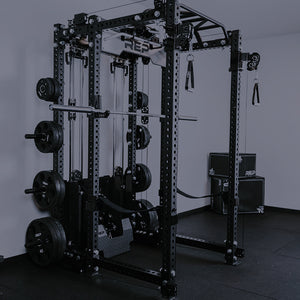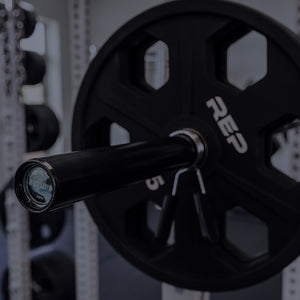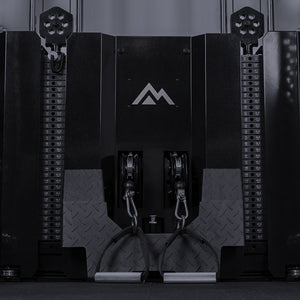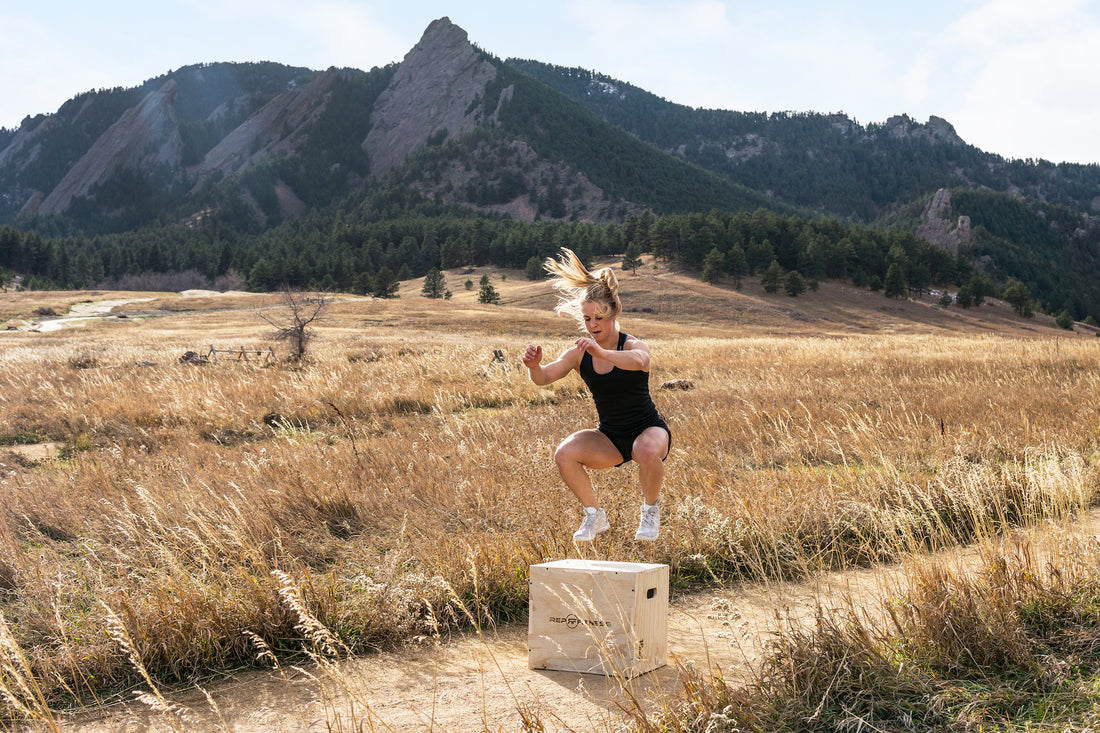
In a world of iron circles, these boxes stand out. But just because something’s different doesn’t mean it doesn’t belong. In fact, a plyo box can add a ton of versatility, function, and fun to your home gym.
"Plyo” is short for “plyometrics.” That’s a type of training that centers around explosive, compound movements, like jumping from the ground onto a step, bench, or box. You can do plyometrics with just body weight or with light weights. Plyo boxes are a staple in plyometrics.
There are different kinds of plyo boxes (also called jump boxes). They come in different sizes, shapes, and materials, but essentially, they’re a simple, sturdy box.
There are several different types of plyo boxes:
Wooden Plyo Box

These are made from construction-grade, ¾" plywood that’s reinforced with internal support. Predrilled holes, interlocking joints, and the internal structure provide extra strength. Look for 3-in-1 Wood Plyo Boxes that offer different height options in one. REP’s come in four different sizes: small (12x14x16”); medium (16x20x24”); large (20x24x30”); and in-between (16x18x20”).
Soft Plyo Box

Prevent bumps and scrapes on your shins with a soft plyo box. The inside is a strong wood core and the outside is a soft foam cover. The foam absorbs impact and the grippy vinyl is textured to reduce slipping and keep the box in position on the floor. The 3-in-1 type comes in three sizes: small, medium, and large, and you can flip them on different sides for different heights.
A soft plyo box also comes as a stackable version.

Adjustable Plyo Box
The Adjustable Plyo Box is quick and easy to adjust between three different heights: 16”, 20”, and 24”. This box is made from thick steel with solid steel pins to lock the legs in place. The rubber top is covered in a nonslip surface, and rubber feet hold the box in place on the floor.

Why Use a Plyo Box?
Plyometrics are a great add-on to your regular workout, even if you aren’t a plyo athlete. Boxes can help improve your speed, power, and strength. Jumps also burn a lot of calories and can build your endurance, stamina, and coordination. They are compound movements, but they really hit the quads, glutes, hamstrings, and calves.
How to Use a Plyo Box
There are many different exercises you can do on a plyo box.
Box jumps are the most common. A starting point for most people is between 18 and 30 inches, depending on your ability and conditioning. Younger and shorter athletes may need a little lower to start.

Box squats can also be performed on a plyo box. You can use a barbell, bodyweight, or dumbbells to squat down to the box, pause, and drive back up.
Box bench press: Switch out your regular bench for a hard plyo box (wood is best) to mimic some of the same benefits of a floor press – but with leg drive. Try it and see.
Box push-ups: Modify your push-ups and add different challenges by elevating your feet or hands on the box to make incline or decline push-ups. Incline (hands on the box) are going to be an easier modification, and decline (feet on the box, hands on the floor) will add more upper chest/shoulders and is harder than a normal push-up.
Step-ups: Work your legs by stepping up and down off the box, either with or without weights.

Tricep dips: While dips on a bench or box aren’t the same as on dip handles, they can still be a nice way to target upper body and an alternative for people who can’t dip on handles yet.

Bulgarian split squats: Ah, everyone’s favorite leg torture. In a lunge position, elevate one leg on the box and lunge in place, focusing on working the standing leg.

Other exercises to try on a plyo box:
- Calf raises
- Decline mountain climbers
- Lateral step-ups
- Single-leg box squats
- Pistol squats
- Side planks
- Burpee box jumps
- Box jump overs
- Barbell hip thrusts
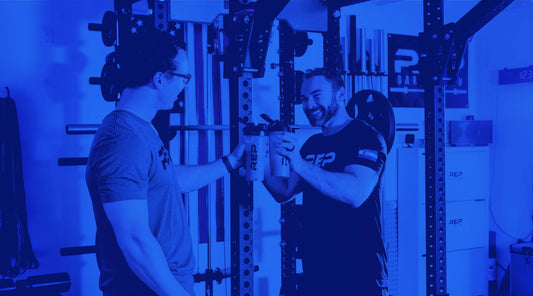
NEWSLETTER SIGNUP
Product launch information, promotions, blogs, and REP news.

